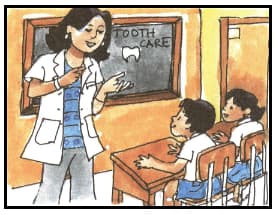Introduction to Microorganisms
Introduction to Microorganisms: Overview
This topic covers concepts, such as, Microorganisms, Types of Microorganisms, Bacteria, Protozoa, Amoeba, Paramecium, Viruses, Fungi, Bread Mould, Penicillium, Aspergillus, Algae, Spirogyra, Microscope, Habitat of Microorganisms & Chlamydomonas etc.
Important Questions on Introduction to Microorganisms
Difine spirogyra.
Find out the correct word from the box to fill in the blank.
| mycelium | chloroplasts | chlorophyll |
Spirogyra has _____ pigment to perform photosynthesis.
Spirogyra is _____.
Choose the number of chloroplast present per cell in Chlamydomonas.
Draw the neat labelled diagram of Chlamydomonas.
The chlamydomonas is a microscopic alga.
In isogamous species, the gametes of chlamydomonas undergo temporary clustering before they depart in pairs. The phenomenon is called _____.
Draw a neat labelled diagram of Aspergillus.
Aspergillosis is an infection caused by a type of bacteria.
Aspergillus is a filamentous _____.
Which of the following is not a place where aspergillus is typically found?
Penicillium reproduces by vegetative reproduction, _____ reproduction, and sexual reproduction.
The fruiting body of Penicillium is cleistothecium.
Penicillium is used in the production of
Write a neat labelled diagram of penicillium.
Your teacher will invite a 'dentist' to come and speak to your class. He/She will tell you about some common dental problems in children. He/She will also tell you how to prevent them. What will be the answer of the dentist to the following question?

How can germs enter our closed mouth?
Name the following:
Viruses can be seen with the help of a compound microscope or electron microscope.
_____ cause diseases like malaria and amoebic dysentery.
A virus consists of a single strand of DNA or RNA surrounded by _____ coat.
Cholera and _____ (typhoid/rabies) are diseases caused by bacteria.
